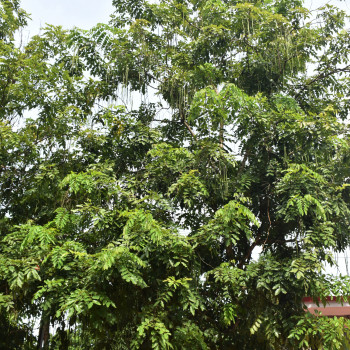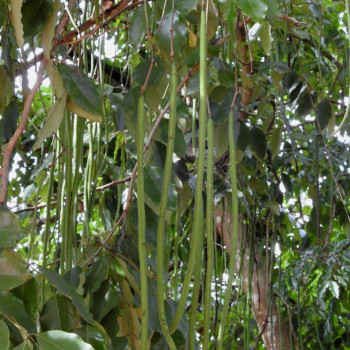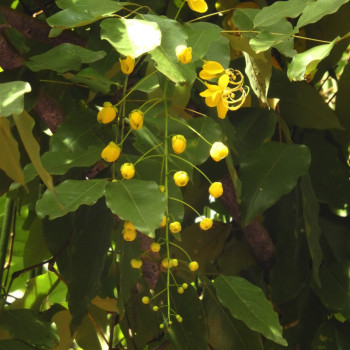Indian laburnum

Scientific Name :
Cassia fistula L.
Synonym(s) :
Bactyrilobium fistula Willd.
Local/Common name(s) :
Kani-konna, Indian laburnum
Family :
Fabaceae
Habit :
Tree
Flowering/Fruiting Time :
February-September
Habitat :
Moist deciduous forests, widely planted as ornamental plant
Endemic :
No
Status (IUCN) :
Least concern (LC)
Distribution :
Indo-Malesia
Nativity :
Indigenous
Uses :
Ornamental
Description (Morphology) :
Deciduous trees, to 18 m high, thick, surface pale when young, dark grey when old, smooth, exfoliating in hard scales. Leaves paripinnate, altemate, leaflets opposite, ovate, ovate-lanceolate or oblong-ovate, apex acuminate, base obtuse, round or acute, margin entire, glabrous above, glaucous and puberulent beneath, stipules small, free, lateral, cauducous; rachis slender, pulvinate, glabrous; petiolule 4-7 mm long, slender, grooved above; lateral nerves 9-25, pinnate, slender, prominent, secondary laterals prominent; intercostae reticulate, prominent. Flowers bisexual, yellow, in axillary drooping racemes; pedicels 3-7 cm. Calyx tube short, lobes 5, ovate, apex obtuse, reflexed. Petals 5, obovate, subequal, clawed. Stamens 10, all fertile; upper 3 short with erect filaments to 7.5 mm; anthers 3 mm, basifixed; lower 3 large with curved filaments, to 3 cm; anthers 5 mm, dorsifixed; medium 4 with erect filaments to 1 cm; anthers versatile with curved beak to 6.5 mm; anthers dehiscing by apical pores. Ovary half inferior, appressed-pubescent; ovules many; style to 5 mm; stigma punctiform. Fruit a pod cylindrical, black, shortly stipitate, indehiscent, woody, transversely septate; seeds 25-100, 6-8 mm broad, ovoid, pale brown, immersed in pulp.





